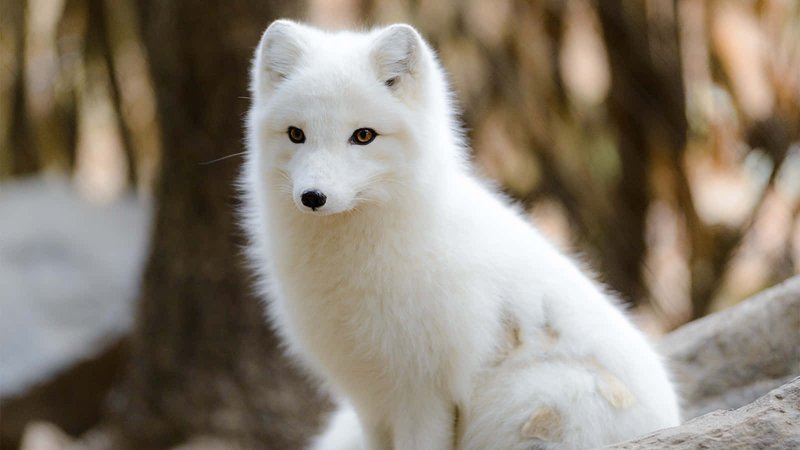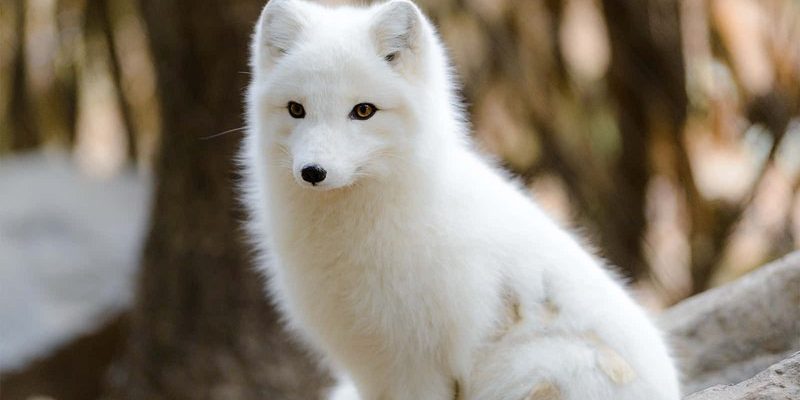
You might be surprised to learn that the Arctic fox isn’t just about cute photos and dramatic wildlife documentaries. It’s an essential predator and scavenger in its habitat. Understanding its role helps us grasp the delicate balance of life in some of the harshest conditions on Earth. So, let’s take a closer look at how this crafty creature fits into the grand puzzle of the Arctic ecosystem.
What is the Arctic Fox?
The Arctic fox (Vulpes lagopus) is a small mammal native to the cold Arctic regions of North America and Eurasia. With its thick, warm fur and bushy tail, this fox is remarkably well-adapted to its environment. It can withstand temperatures as low as -58°F (-50°C), thanks to its fluffy coat that changes color with the seasons—from white in winter to brown or gray in summer.
These clever little animals are about the size of a house cat, weighing anywhere from 6 to 24 pounds. They’ve got a keen sense of smell and excellent hearing, which they use to locate prey underneath the snow. Arctic foxes are not just adorable; they’re tough survivors in a way that many animals simply aren’t.
The Role of the Arctic Fox as a Predator
One of the Arctic fox’s primary roles is that of a predator. It primarily hunts small mammals, such as lemmings, voles, and birds. You might be wondering how this little fox can catch its prey in the snow. Here’s the thing: Arctic foxes use a unique hunting method called “mousing,” where they leap high into the air and pounce down on their unsuspecting meals below the snow. This skill not only showcases their agility but also highlights their important role in controlling rodent populations.
Predation helps maintain a balanced ecosystem. By keeping the numbers of small mammals in check, the Arctic fox prevents overgrazing and ensures that plant life can thrive. This, in turn, supports other species in the food chain, creating a ripple effect through the ecosystem.
Impact on Prey Populations
In the Arctic, the populations of lemmings can explode dramatically in certain years. When that happens, Arctic foxes take advantage, feasting on these small rodents. However, their hunting also keeps these populations in check, preventing them from overrunning their habitat. When the balance is maintained, it allows for a healthy ecosystem where various species can co-exist.
It’s fascinating to see how interconnected life in the Arctic is. The Arctic fox, as a predator, contributes to biodiversity by regulating prey populations, and in turn, the health of the entire tundra ecosystem.
Scavenging: Another Essential Role
Apart from being a fierce hunter, the Arctic fox is also a scavenger. In the harsh Arctic environment, food can be scarce. The fox often takes advantage of leftover kills from larger predators, like polar bears or wolves. Instead of letting perfectly good food go to waste, the Arctic fox swoops in to make a meal out of it.
This scavenging behavior is absolutely vital. It helps clean up the environment, recycling nutrients back into the ecosystem. Think of it as nature’s clean-up crew. By consuming carrion, the Arctic fox aids in nutrient distribution, which benefits the soil and aids in plant growth.
Connections with Other Species
The Arctic fox’s scavenging habits also impact other species. For example, when it shares its finds with other animals, like birds or smaller mammals, it fosters a sense of community in the harsh Arctic climate. This behavior can even influence the health of other predatory species by ensuring they have access to food, thereby supporting the overall balance of life.
Impact of Climate Change on Arctic Foxes
Unfortunately, as with many species, the Arctic fox is feeling the effects of climate change. Rising temperatures and melting ice threaten their habitat and hunting grounds. As the tundra warms, their prey, particularly lemmings, may change their behavior or decline in numbers.
Scientists have noted that as the Arctic warms, other species, such as red foxes, are moving north and competing for resources. This competition can be devastating for the Arctic fox, which is already at the edge of its survival. When a predator’s environment changes, it can lead to shifts in population dynamics and disrupt the entire ecosystem.
Conservation Efforts for Arctic Foxes
To ensure that Arctic foxes continue to thrive, various conservation efforts are underway. Organizations are working to protect their habitats, which is crucial as these foxes are well-adapted to live in cold environments.
Additionally, educating local communities and the public about the importance of Arctic foxes can help create awareness and inspire conservation efforts. Protecting the Arctic fox means protecting a whole ecosystem. When we preserve one species, we often end up protecting many others that share its habitat.
In summary, the Arctic fox plays a multifaceted role in its ecosystem. From being a skilled predator to a vital scavenger, this small mammal embodies the intricate balance of life in the Arctic. As we face ongoing environmental changes, it’s essential to recognize how intertwined we all are with nature.
Understanding the Arctic fox’s role helps us appreciate its wider significance in the ecosystem and the need for protection efforts. When we take steps to safeguard these captivating creatures, we’re not just saving a single species; we’re preserving the delicate fabric of life in one of the most extreme places on Earth. So next time you see a picture of an Arctic fox, remember—this little animal is essential for keeping the Arctic ecosystem healthy and thriving.

